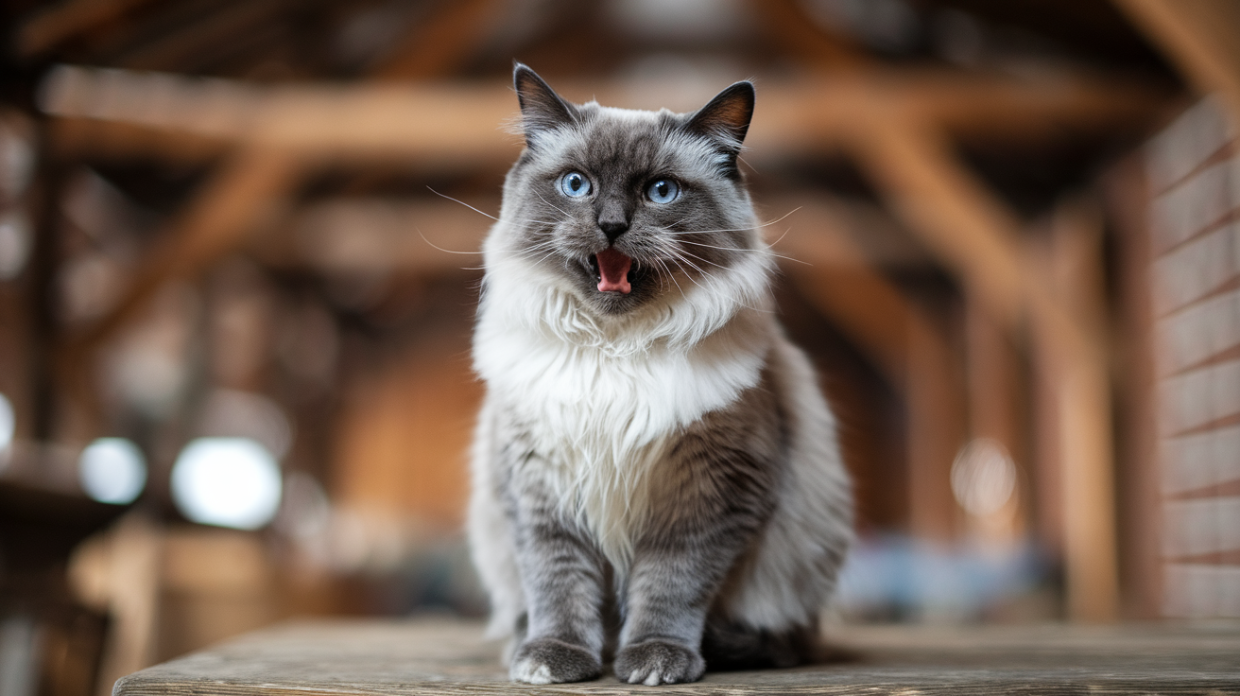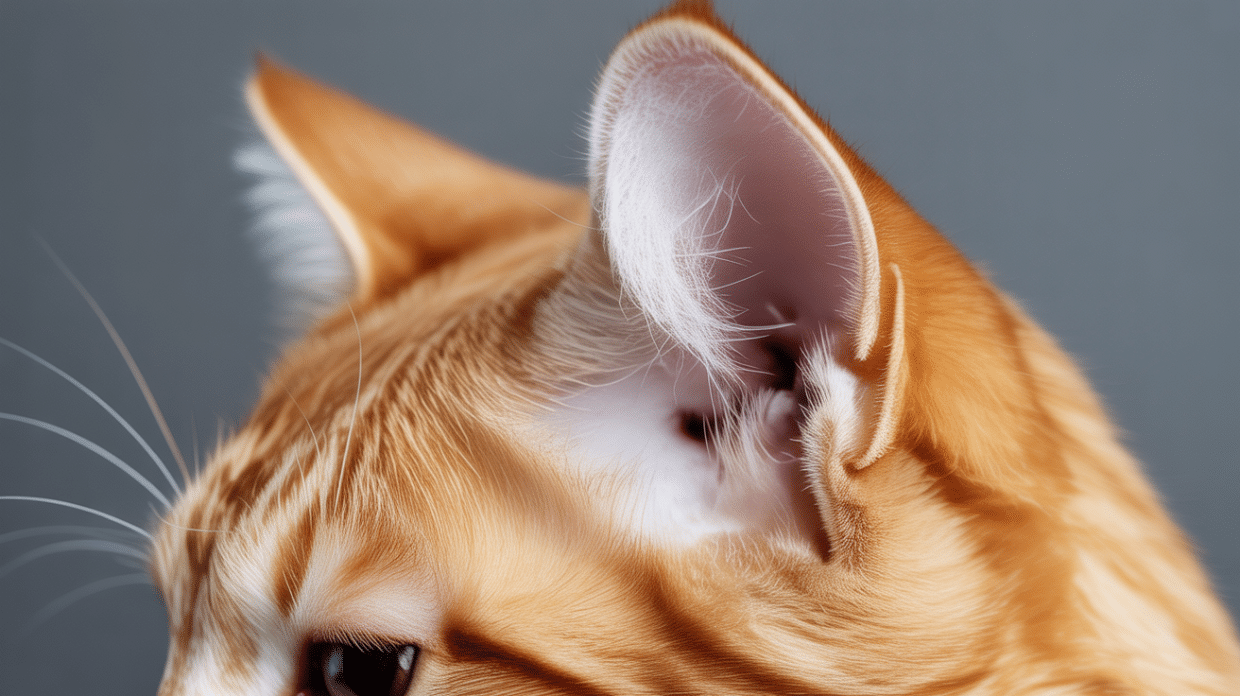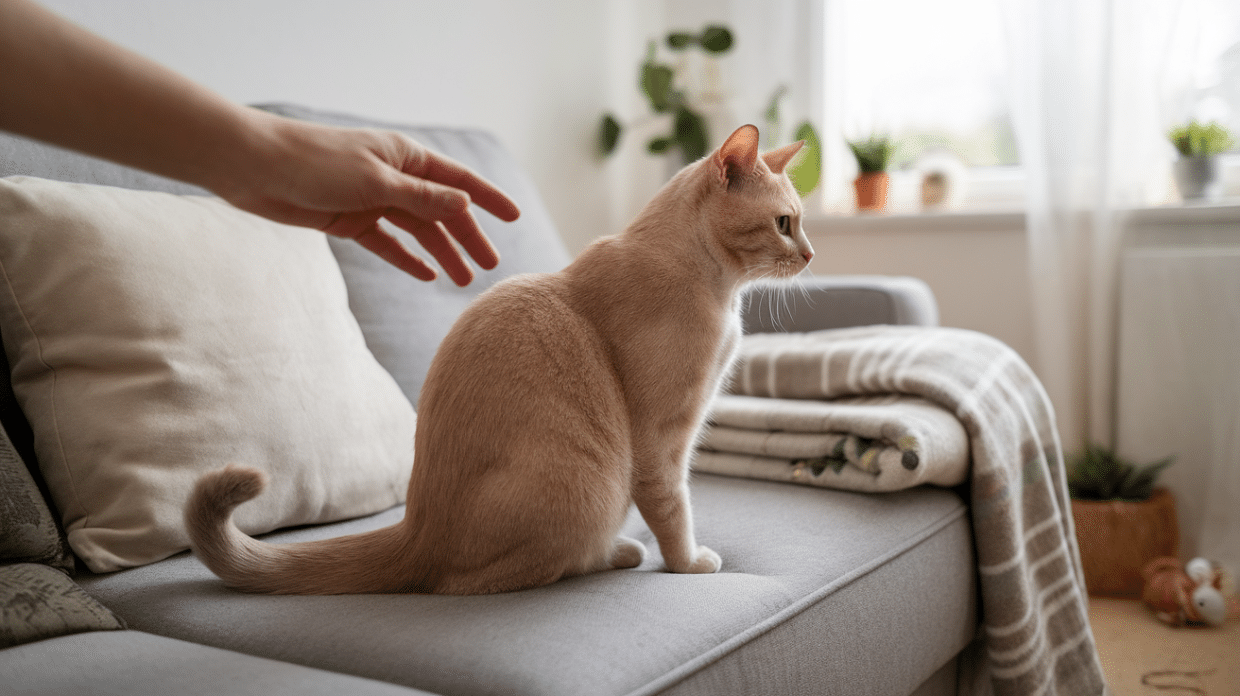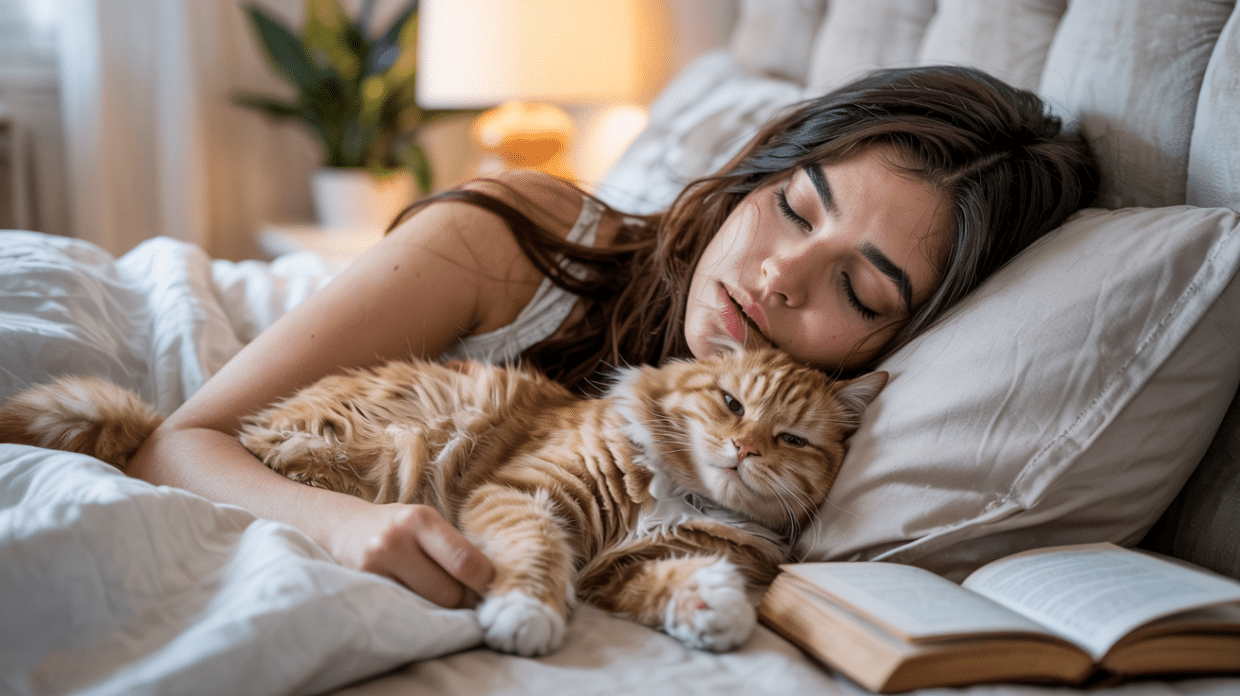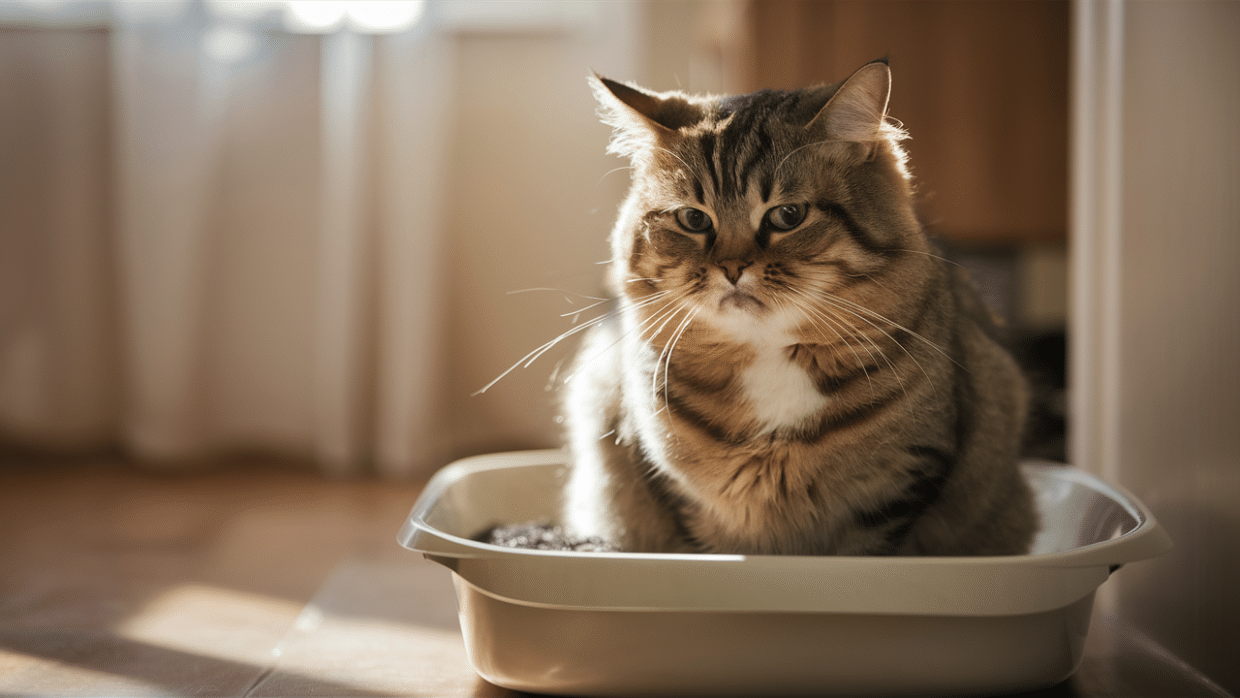Are you wondering if you can use Ofloxacin for cats?
Though originally developed for humans, veterinarians commonly prescribe it “off-label” for cats.
It is used for treating conditions like bacterial conjunctivitis and corneal ulcers.
This broad-spectrum antimicrobial stops bacterial growth, quickly relieving symptoms such as pain, swelling, and discomfort.
While effective against many bacterial strains, it’s important to note that not all eye irritations are caused by bacteria – some may be viral, fungal, or allergy-related.
A proper veterinary diagnosis is essential before beginning any antibiotic treatment to ensure the most effective care for your cat’s specific eye condition.
Keep reading to learn more!
What is Ofloxacin and How Does it Work?
Ofloxacin is an antibiotic eye drop medication frequently used to treat bacterial eye infections in cats.
This medication directly interferes with bacterial DNA replication, preventing harmful bacteria from multiplying and spreading in the eye.
The ophthalmic solution typically comes in a 0.3% concentration and is dispensed in small dropper bottles for easy application.
While primarily developed for human use, veterinarians regularly prescribe ofloxacin off-label as an effective treatment option for feline eye conditions.
It provides quick relief from symptoms while targeting the underlying infection.
What Eye Infections Does Ofloxacin Treat?
Ofloxacin treats several common eye infections in cats, making it a versatile medication in veterinary medicine.
Let’s look at the specific conditions where this antibiotic proves most helpful.
1. Bacterial Conjunctivitis
Bacterial conjunctivitis causes redness, yellow-green discharge, and excessive blinking in cats.
The infection affects the conjunctiva—the thin membrane covering the eye’s surface and inner eyelids.
Ofloxacin targets the bacteria causing the inflammation, usually clearing the infection within a few days of consistent treatment.
2. Corneal Ulcers
Corneal ulcers occur when scratches, foreign objects, or infections damage the eye’s surface. These painful injuries leave the deeper eye layers vulnerable to serious bacterial infections.
Ofloxacin helps eliminate bacteria that could worsen the ulcer or cause complications.
Without proper antibiotic treatment, corneal ulcers can lead to vision loss or even require eye removal in severe cases.
3. Other Bacterial Eye Conditions
Ofloxacin also treats bacterial keratitis (inflammation of the cornea) and certain types of uveitis (inflammation of the eye’s middle layer) and can prevent infections following eye surgeries.
The medication’s broad-spectrum activity makes it effective against many bacterial strains commonly affecting feline eyes.
Dosage & How to Use Ofloxacin for Cats
Proper administration of Ofloxacin ensures your cat receives the medication’s full benefit.
Follow your veterinarian’s instructions precisely, as dosages may vary based on the severity of the infection.
Standard Dosing Guidelines
The typical cat dosage is one drop in the affected eye every 6 hours.
Most treatment courses last 7-14 days, though your vet may recommend longer treatment for persistent infections.
Always complete the full course of medication, even if symptoms improve quickly.
Loading Doses for Severe Infections
For severe eye infections, your vet might recommend a loading dose.
This involves applying one drop every 15 minutes for four consecutive doses when starting treatment.
This approach helps achieve therapeutic levels of the antibiotic more quickly in the eye tissue.
Tips for Applying Eye Drops Correctly
- Wash hands thoroughly before handling medication
- Hold the cat securely with the head slightly tilted upward
- Pull down the lower eyelid to create a small pocket
- Apply the drop into a pocket without touching the dropper to the eye
- Keep the cat still for 30 seconds to let the medication spread
- Wipe away excess with clean tissue
- Reward the cat with praise or a treat afterward
How Long Does it Take to Work?
Most cats show a noticeable improvement within 1-3 days after starting Ofloxacin treatment.
Early signs of progress include less redness around the eye, reduced discharge, and decreased pawing or rubbing at the affected area.
Despite these quick improvements, it is crucial to complete the full prescribed treatment course, which typically lasts 7-14 days.
Finishing all the medication eliminates the infection and helps prevent antibiotic resistance.
If you don’t observe any positive changes after 3 days of treatment, or if symptoms worsen at any point (increased pain, eye cloudiness, or vision changes), contact your veterinarian immediately for further evaluation.
Side Effects and Safety Precautions
Most cats tolerate Ofloxacin well, but you should monitor for possible reactions during treatment.
1. Common Mild Reactions
Temporary stinging or burning after application is normal. Your cat may blink rapidly or briefly paw at the eye.
Mild redness at the application site can occur but should quickly fade.
These reactions typically last only minutes and often decrease after the first few doses.
2. Serious Side Effects
Watch for signs of allergic reactions, such as facial swelling or excessive pawing. If the infection worsens (increased discharge, cloudiness, or pain), the bacteria may resist the antibiotic.
3. When to Stop Using and Consult a Vet
Contact your veterinarian immediately if:
- New or worsening symptoms develop
- Eye swelling increases significantly
- The discharge becomes thicker or changes color
- Your cat shows unusual sensitivity to light
- The medication appears discolored before use
Is Ofloxacin Safe for Kittens?
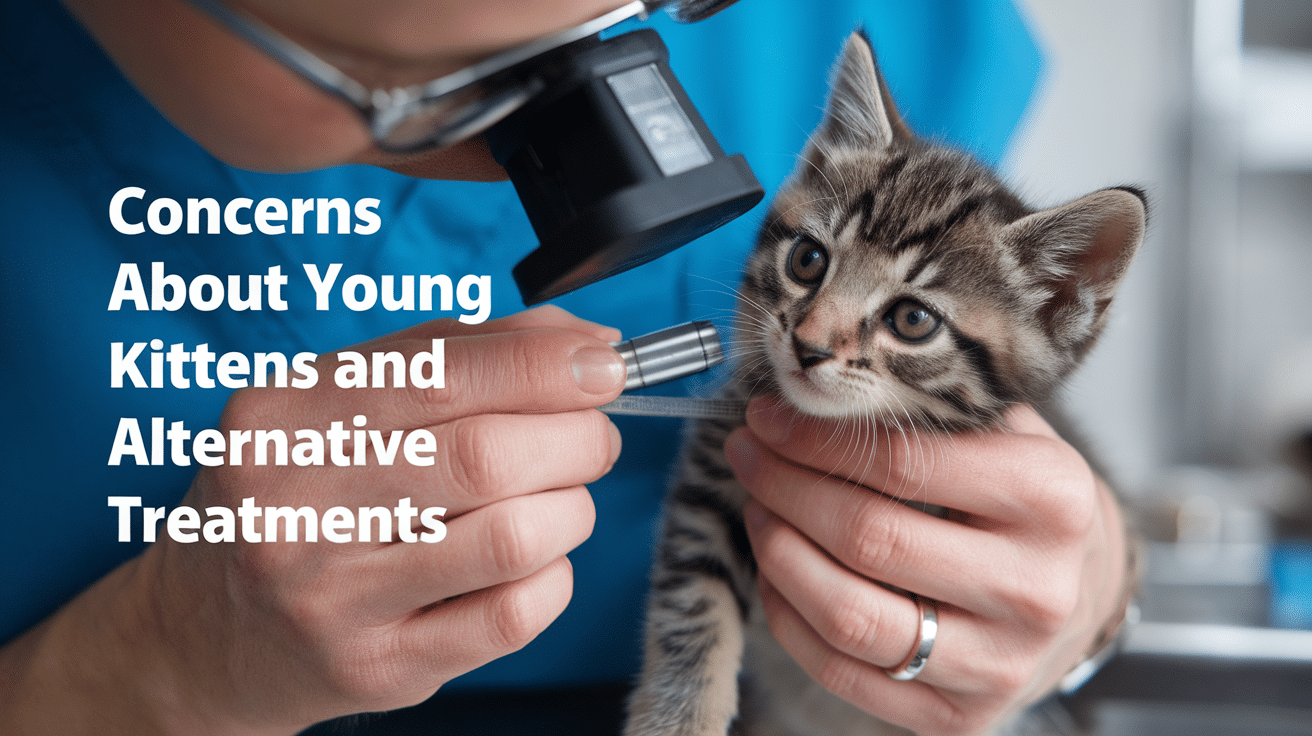
Veterinarians generally approach ofloxacin use in kittens with caution.
While effective against bacterial eye infections, kittens under 12 weeks have developing immune systems and metabolize medications differently than adult cats.
For young kittens, vets often prefer gentler, first-line antibiotics like erythromycin or neomycin-polymyxin B combinations.
These alternatives provide effective treatment with potentially fewer risks for developing systems.
Always consult your veterinarian before using any medication for a kitten’s eye infection, even if you have ofloxacin from another pet.
Your vet may recommend a different treatment approach or adjust the dosage for your kitten’s size and condition.
Alternatives to Ofloxacin for Cats
Several effective alternatives exist when ofloxacin isn’t suitable for your cat’s eye condition.
Your veterinarian can recommend the best option based on your cat’s diagnosis and health history.
Other Prescription Antibiotics
- Tobramycin – Effective against many bacterial strains while being gentle on the eye surface
- Erythromycin ointment – Good for young kittens and mild infections
- Gentamicin – Works well for certain resistant bacteria
- Ciprofloxacin – Another fluoroquinolone antibiotic with similar effectiveness
- Chloramphenicol – Broad-spectrum option for complex infections
Home Remedies for Minor Irritation
- Sterile saline rinses to gently clean debris (use only products labeled for eye use)
- Warm chamomile tea compresses (cooled completely) to soothe irritation
- Removing environmental irritants like dust or strong household cleaners
- Clean cotton ball moistened with warm water to wipe away discharge
Remember that home remedies should only be used for minor irritations, not active infections, and always after consulting with your veterinarian.
Where to Buy Ofloxacin for Cats
Ofloxacin requires a valid veterinary prescription, as it’s unavailable over the counter.
After obtaining a prescription from your vet, you can purchase it from:
- Veterinary clinics (typically $10-19 per bottle)
- Licensed online pet pharmacies ($7-15 per bottle)
- Local human pharmacies that fill pet prescriptions
Avoid purchasing from unverified sources or websites that don’t require prescriptions, as these products may be counterfeit, expired, or improperly stored.
Always confirm the pharmacy is licensed and reputable to ensure your cat receives genuine, effective medication.
Conclusion
Ofloxacin effectively treats cats’ bacterial eye infections, relieving symptoms like redness, discharge, and discomfort.
When used as directed, this antibiotic eye drop helps most cats recover within 1-2 weeks.
However, proper veterinary diagnosis remains essential before starting any antibiotic treatment, as not all eye conditions are bacterial.
Always follow your vet’s instructions regarding dosage and treatment duration, and complete the full course even if symptoms improve quickly.
Monitor your cat throughout treatment, and don’t hesitate to contact your veterinarian if you notice worsening symptoms or lack of improvement.

